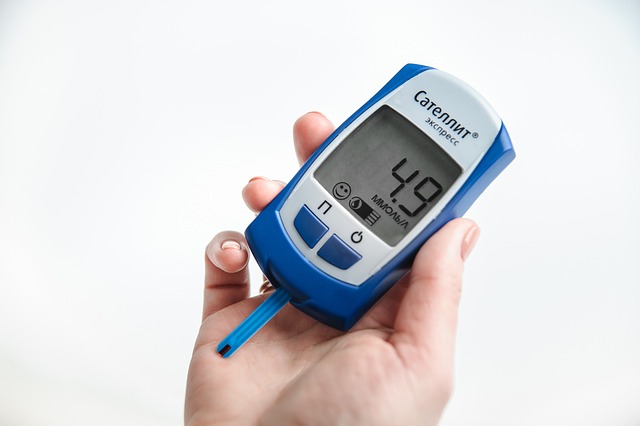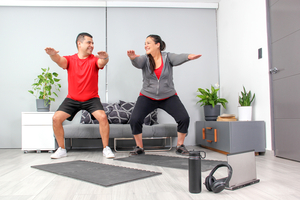What does it mean if your doctor says you may have prediabetes?
Prediabetes affects 1 in 3 Americans, including half of those over age 65. Only 8 to 14% of those with prediabetes know they have it, so how do you know if you do?
You can easily be confused about whether you have prediabetes, especially if any of the following sound familiar.
- Your doctor says, “You may have prediabetes.”
- You do not feel sick. (So it is really possible that you might have a chronic condition that puts you at risk for type 2 diabetes)?
- Your doctor says that your blood sugar is, “a little high.” (Compared to what?)
- Your physician tells you that you are at high risk for diabetes because you are overweight or had gestational diabetes (diabetes during pregnancy). (Is that the same as having prediabetes)?
It is important to know if you have prediabetes because treatment can be effective for preventing or delaying the onset of type 2 diabetes. Here is how you can test for prediabetes and when it is confirmed.
Random Blood Glucose Test
There is a chance that your healthcare provider might suspect that you have prediabetes due to certain risk factors. These can include:
- Being overweight or obese.
- Being 45 years or older.
- Having a family history of type 2 diabetes.
- Being of a high-risk ethnicity, such as African American, Latino, Native American, or Pacific Islander.
- Being physically inactive.
In some cases, your provider’s first step may be to order what is called a random blood glucose (or blood sugar) test. This test will not confirm prediabetes, but it can help your doctor determine whether to continue testing for prediabetes. It is a good first step because it is an easy and convenient test. You can take it any time and do not need to fast for it. [1]
The random glucose test cannot confirm prediabetes. It is a good screening test to alert you to the possible need for a true diagnostic test. You should get your blood sugar tested again if your random glucose test is out of range. Your healthcare provider might suggest a fasting blood glucose test, a glycated hemoglobin (A1C) test, or an oral glucose tolerance test (OGTT).
Tests for Prediabetes
According to the American Diabetes Association (ADA)[2], there are three possible tests that can show that you have prediabetes.
- Fasting blood glucose (FBG)
- Glycated hemoglobin (hemoglobin A1C or A1C)
- Oral glucose tolerance test (OGTT)
- CDC prediabetes risk screening test (unofficial)
A fasting blood glucose (FBG) test measures your blood sugar level at a single moment in time. You get your blood drawn after an overnight (usually 8 to 12 hours) fast without eating or drinking anything with calories.
Glycated hemoglobin (hemoglobin A1C or A1C) gives a picture of your average blood glucose levels over the past three months. You do not need to fast for your A1C test, and it only requires a blood draw.
The oral glucose tolerance test (OGTT) checks how well your body processes sugar. The test takes a little longer than the FBG and A1C tests. You go to the lab after an overnight fast and get your blood drawn. Then you drink a liquid solution containing 75 grams of glucose (a type of sugar). Wait for 2 hours, without eating or drinking anything else, and get your blood drawn again. Be aware that the sugary solution is so sweet that some people have trouble drinking it. It has the amount of sugar in 2 cans of a soft drink or 5 toaster pastries.
You can get any of the above blood tests at most regular labs or clinics where you get your other blood tests such as cholesterol levels. Be sure to check whether you need to make an appointment, especially for the OGTT.
Instant Online Diabetes Risk Screening
A blood test may not be that bad, but what if you could get a good idea of your prediabetes risk:
- Instantly,
- Online, and
- Without needles?
You can, with the test right here on Lark’s website. The Centers for Disease Control and Prevention (CDC) developed a prediabetes risk test to assess your diabetes risk. It asks about risk factors such as your family history of diabetes, your weight, your age, and other risk factors for prediabetes. Within seconds, you can get a score that correlates with your risk for prediabetes. If you are at high risk, the CDC suggests getting a blood test to check if you have prediabetes.
Confirmation with a Second Test
If your first test result suggests that you may have prediabetes, your healthcare provider will probably order a repeat test to confirm that you have prediabetes. Prediabetes can only be confirmed if your second test is in the prediabetes range again.
Having the second test helps make sure that your first test is not a mistake. The first test could have been misleading because of a lab error, for example. Other ways the first test could be wrong is if you accidentally ate instead of fasted before an OGTT or FBG or if you were slightly dehydrated when you took your test.
The moment the results of your second test also indicate that you have prediabetes, prediabetes is confirmed.
Prediabetes Test Values
Your healthcare provider should have the final say about whether you have prediabetes, but the ADA provides guidelines for diagnosing prediabetes with blood glucose, A1C, and OGTT tests.
When to Get Tested for Prediabetes
You should get tested for prediabetes if you or your doctor thinks you may have high blood sugar. This could be if you have symptoms, but symptoms of prediabetes are rare. Instead, the National Institutes of Health recommends getting tested for prediabetes if you are overweight or obese and have one or more of the following risk factors. [3]
- You are physically inactive.
- You had gestational diabetes (diabetes while you were pregnant) or you gave birth to a high-birth-weight baby.
- You have high blood pressure or cholesterol or you have heart disease.
- Your ethnicity is Pacific Islander, American Indian, African American, Alaska Native, Asian American, or Hispanic/Latino.
You should also get tested if you have family members with prediabetes or if you are at least 45 years old.
What If Prediabetes Is Confirmed?
Having prediabetes may put you at higher risk for developing type 2 diabetes, but you can fight back. Prediabetes treatment that includes nothing but lifestyle modifications can be effective.
- It could put your blood sugar levels back to normal so that you do not have prediabetes anymore.
- It could prevent type 2 diabetes so that you do not have to monitor your blood sugar levels each day.
- It could delay the onset of type 2 diabetes, which can lower your lifetime risk for diabetes complications.
- It could make diabetes medications more effective, should you need them, and allow you to take lower doses.
Your doctor should follow up with you to make a prediabetes treatment plan after prediabetes is confirmed. Healthy lifestyle changes are the core of prediabetes treatment. They can lower your risk for type 2 diabetes by over 50%.
Losing extra weight and increasing your physical activity are two of the most effective changes you can make to reduce insulin resistance and lower high blood sugar. Losing as little as a few pounds can lower your risk for diabetes by several percent, and losing 5 to 7% of your body weight, or about 8 to 14 lb. for many people, can cut diabetes risk by half.
Physical activity recommendations to increase insulin sensitivity and lower diabetes risk include getting at least 150 minutes per week of aerobic activity. Examples include brisk walking, hiking, swimming, cycling, group fitness classes, and raking leaves. You can get further benefits with resistance training such as lifting weights or using resistance bands.
Follow-Up Blood Sugar Testing
If your blood sugar was normal according to your fasting blood glucose, A1C, or OGTT test, you should retest in 3 years as long as no other health conditions change. If you have prediabetes, you should have follow-up testing at least every 2 years to see if you have developed diabetes. Testing should be more frequent if you are having trouble controlling your blood sugar.
Diabetes Prevention Program
The national Diabetes Prevention Program (DPP) promotes weight loss and physical activity and has been proven to lower diabetes risk. It includes a curriculum approved by the CDC and is designed to take a year to complete. You may be eligible to participate in a DPP without cost.











.webp)






